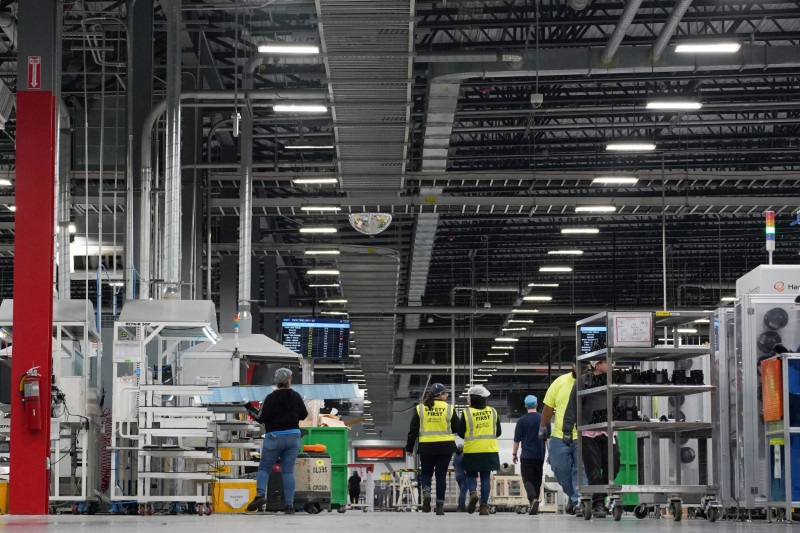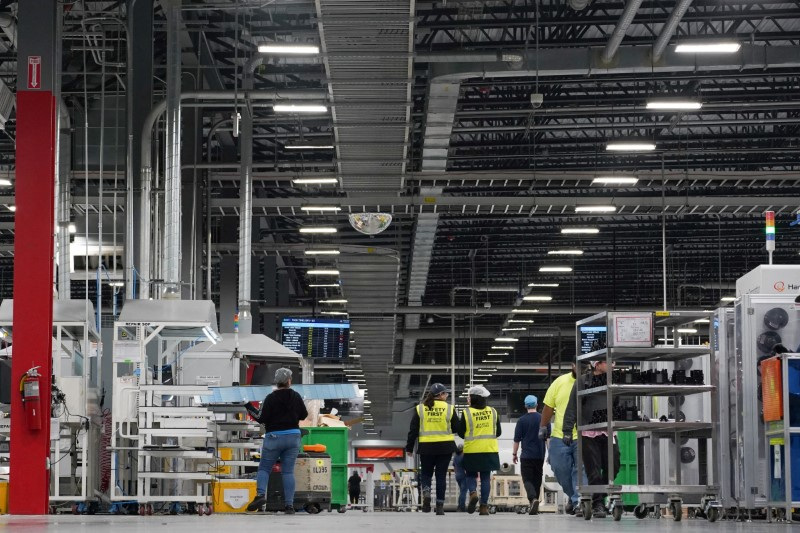
WASHINGTON (Reuters) – U.S. manufacturing production rebounded less than expected in November as the boost from motor vehicle output was partially offset by persistent weakness in the aerospace industry, despite the end of a crippling strike by factory workers at Boeing (NYSE:BA).
Factory output increased 0.2% last month after a downwardly revised 0.7% decline in October, the Federal Reserve said on Tuesday. Economists polled by Reuters had forecast production rebounding 0.5% after a previously reported 0.5% decrease.
Production at factories declined 1.0% on a year-on-year basis. Output had been depressed in the prior two months by the Boeing strike. Though the strike ended in early November, production of aerospace and miscellaneous transportation equipment has remained subdued.
Manufacturing, which accounts for 10.3% of the economy, continues to tread water in the aftermath of the U.S. central bank’s aggressive monetary policy tightening between March 2020 and July 2023.
Growth is, however, expected next year against the backdrop of lower interest rates. But tariffs on imported goods planned by President-elect Donald Trump’s incoming administration could raise prices for raw materials.
Motor vehicle and parts output soared 3.5% last month. Production of aerospace and miscellaneous transportation equipment fell 2.6%, attributed to declines in the manufacturing of aircraft parts. That followed a 6.7% tumble in October.
Durable manufacturing production increased 0.7%, also lifted by gains in machinery output.
Nondurable manufacturing output dropped 0.3%, pulled down by decreases in the production of apparel and leather as well as petroleum and coal products, and paper.
Mining output decreased 0.9% after edging down 0.1% in October. Utilities production fell 1.3% as unseasonably mild temperatures weighed on demand for electric and natural gas utilities. That followed a 1.3% increase in October.
Industrial output slipped 0.1% last month after sliding 0.4% in October. It declined 0.9% year-on-year in November.
Capacity utilization for the industrial sector, a measure of how fully firms are using their resources, dropped to 76.8% from 77.0% in October. It is 2.9 percentage points below its 1972–2023 average. The operating rate for the manufacturing sector ticked up 0.1 percentage point to 76.0%. It is 2.3 percentage points below its long-run average.

